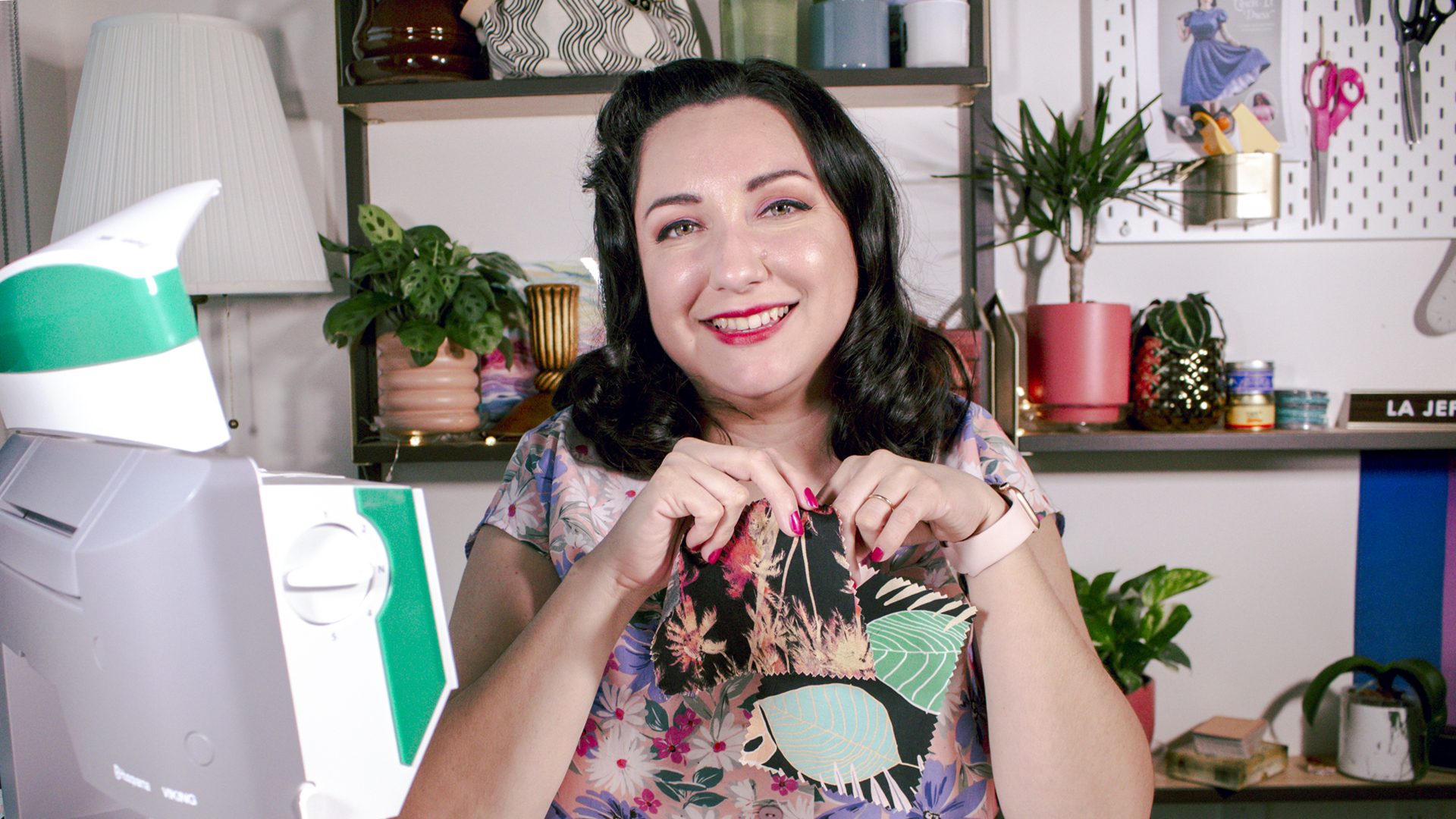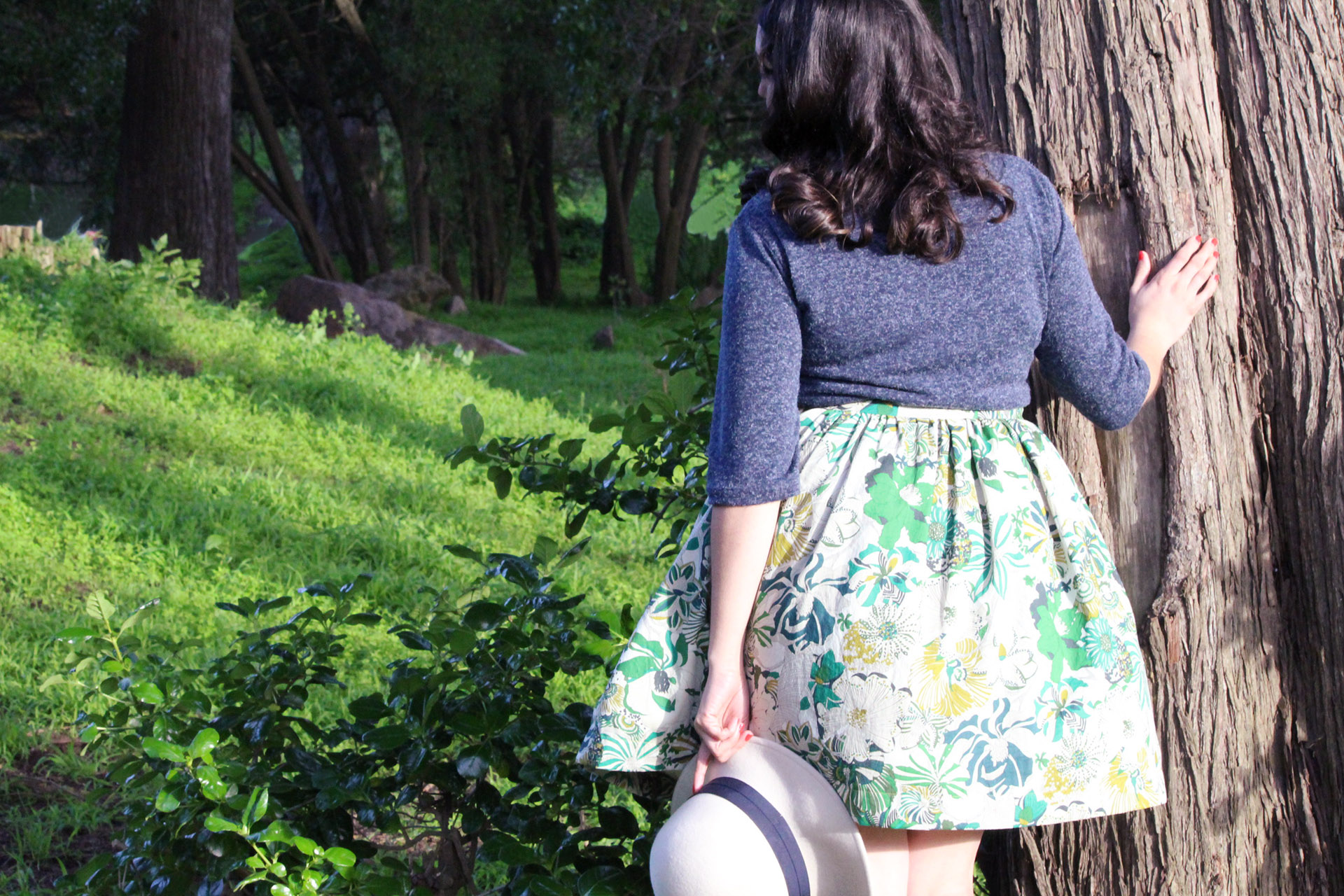The last of the winter frost is starting to melt away. And you realize you’ve been living in a flannel, oversize sweater for months on end. Like a groundhog, you rub your eyes, peer outside, and wonder what day it is. And will it stop being cold… please.
Before you know it suddenly tulips are popping up everywhere, the sunshine feels warm on your face, and Spring is fully upon you: ITS EXCITING.
As someone who sews, the next question is… what’s your wardrobe looking like for the changing weather?
What dresses and blouses are you going to make with pretty spring fabrics, now that you can wear something more free and fluttery?

If you’re browsing online right now, there are so many options to choose from for your spring fabrics, that it can be a bottomless rabbit hole.
This post focuses on breaking down a few of the most commonly used spring fabrics. You’ll know what to work with in your sewing, whether it’s vintage or more modern pieces you want for your wardrobe.
As I wrote this post, I looked for spring fabrics which had the following qualities:
- These fabrics are frequently recommended in spring sewing patterns.
- With layering, these spring fabrics can be used as transitional pieces.
- They have a consistent quality, from fabric store to fabric store (which is super important if you’re shopping online during lockdown!)
Spring Fabrics You Should Sew With
Fabric #1: Batiste
It’s light… it’s airy… it screams spring!
The quality of the fabric is instantly perfect for warm days and a cardigan on top. It’s lightweight, transparent, and with it being a plain weave, is easy to sew with!

You’ll usually find this fabric used in garments such as blouses, camisoles, and simple cover ups. To ensure the garment is opaque, double it up!
Fabric #2: Chambray
Chambray fabric is a lovely spring version of a heartier shirting fabric, being tightly woven and soft.
This cotton fabric is fantastic because it can be dressed up or down, depending on the application!
Chambray tends to be more in the blue/indigo color range, with its warp and weft yarns being dyed in different colors (one yarn blue, one white) Sometimes it’s seen in reds or (more rarely) other specialty colors.

You’ll usually find this fabric used with shirt dresses, button up tops for all genders, and sometimes as shorts and lounge pants. With interlining or backing material, I’ve also spotted it in cool, cozy jackets!
Fabric #3: Cotton Poplin
Cotton Poplin is one of my absolute favorite fabrics! It has a crisp hand that is perfectly perky as a spring fabric.
Poplin is fantastic as a spring fabric because of its medium weight and structured hand. Also due to its tight plain weave and finish, it tends to have a little bit of a sheen on it, which feels super soft.

You find this fabric used over a bunch of different applications, including dresses with structure, tops which tend to be more fitted, and shorts and slacks which are more snappy, but still casual.
Using Spring Fabrics is a LOT of fun!
The three fabrics I outlined are barely the tip of the iceberg in terms of what’s available in online stores. Spring fabrics are plentiful, but using the woven fabrics I’ve listed will provide tons of options for potential garments.
If you’re looking to start gathering ideas from the fabrics I’ve listed, or are looking to try other spring-specific fabrics, I highly recommend creating a swatch book with them!

What’s your favorite spring fabric? Is there one you keep going back to again and again?

Like what you see?


















